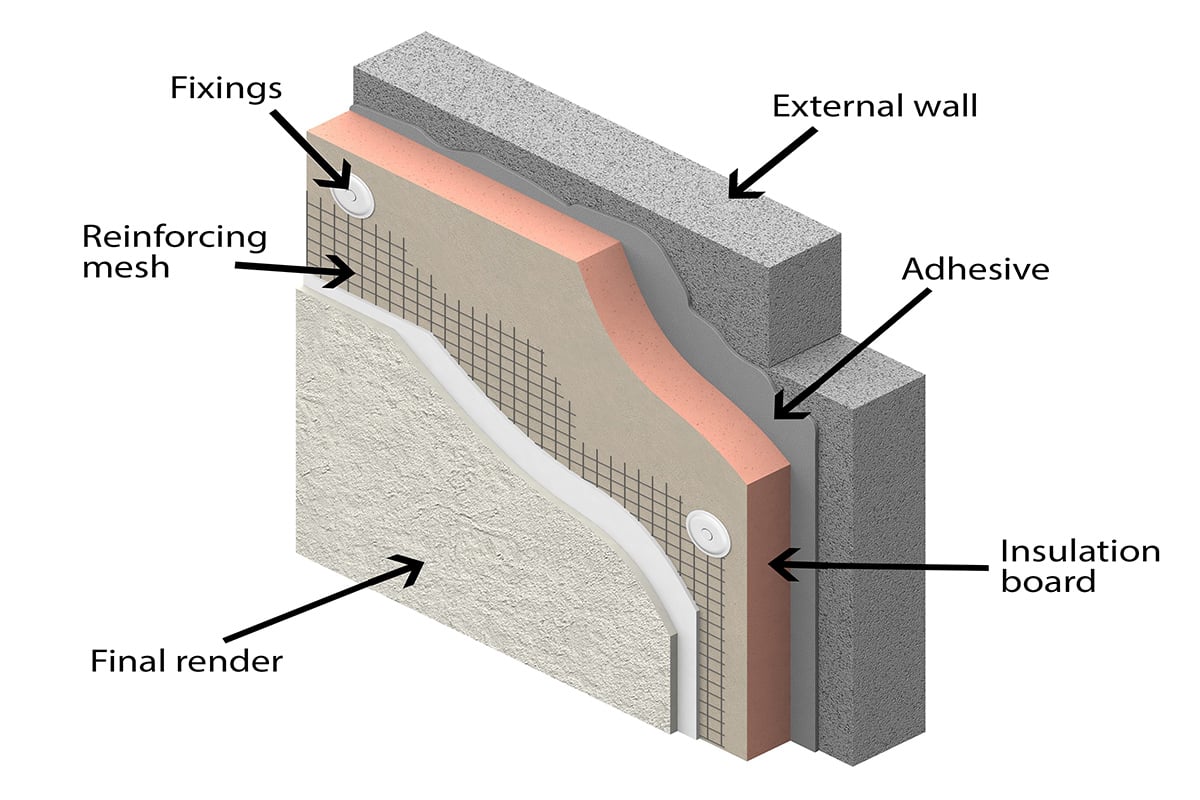
External wall insulation is usually defined as a layer of insulation that's fixed to an existing wall. This layer will be finished either with a coat of render or with an alternative cladding to protect it from the elements.
This method is often required for insulating walls on solid wall properties where there's no option for cavity wall insulation; however, there are other situations where it's the appropriate course of action.
While adding insulation should feel like a no-brainer to improve the thermal efficiency of your home, no form of wall insulation, external wall insulation included, is without some form of challenge — often centred around how you home deals with moisture.
What are the Advantages of External Wall Insulation?
- It reduces heat loss and energy bills
- Fewer draughts and increased the sense of comfort
- It does not disrupt the house while being installed
- This type of insulation does not reduce internal floor area
- It allows walls to contribute to thermal mass (the ‘tea cosy’ effect)
- It improves not only weatherproofing, but sound resistance too
- It increases the life of the wall It reduces condensation on internal walls
Follow Us On
Contact Us
Apel Construction Limited
71-75 Shelton Street, Covent Garden,
London, WC2H 9JQ
Tel: 020 3488 5984
Fax: 020 3488 5980
© 2022 by Apel Construction Limited. All Rights Reserved.
